
Text U of the rongorongo corpus, carved on a beam, also known as Honolulu tablet 2 or Honolulu 3628, is one of two dozen surviving rongorongo texts.

Text U of the rongorongo corpus, carved on a beam, also known as Honolulu tablet 2 or Honolulu 3628, is one of two dozen surviving rongorongo texts.
U is the standard designation, from Barthel (1958). Fischer (1997) refers to it as RR12.
Bernice P. Bishop Museum, Honolulu. Catalog #B.03623 (misidentified as # B.03628 in some sources).
A charred, worm-eaten, and heavily corroded beam, 70.5 × 8 × 2.6 cm of unknown wood. Not fluted. The area of visible inscription on side a (pictured) measures 14 × 5 cm, punctuated with a knothole.
Métraux (1938) said of the Honolulu tablets T and U that,
Collector J. L. Young of Auckland purchased three of the Honolulu tablets circa 1888 "from Rapanui through a reliable agent", who Fischer thinks was probably Alexander Salmon, Jr. It was transferred to the Bishop Museum in August 1920.
As with Échancrée, the two sides are written in different hands: Side a is written with "large plain glyphs", while side b has "small fine glyphs" 5 mm high.
| | This section needs expansion. You can help by adding to it. (June 2008) |
Out of six lines of glyphs on side a, parts of four are visible; out of ten lines on side b, part of one is visible. Some 62 glyphs are preserved. As the two sides were written by different hands, the distinction of recto vs. verso may be irrelevant.
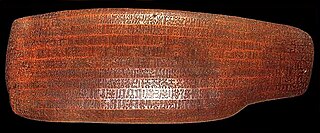
Rongorongo is a system of glyphs discovered in the 19th century on Easter Island that has the appearance of writing or proto-writing. Numerous attempts at decipherment have been made, but none have been successful. Although some calendrical and what might prove to be genealogical information has been identified, none of the glyphs can actually be read. If rongorongo does prove to be writing and to be an independent invention, it would be one of very few inventions of writing in human history.

Rongorongo is a system of glyphs discovered in the 19th century on Easter Island that appears to be writing or proto-writing. Text A of the rongorongo corpus, also known as Tahua, is one of two dozen surviving texts.
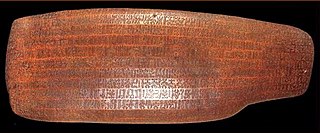
Rongorongo is a system of glyphs discovered in the 19th century on Easter Island that appears to be writing or proto-writing. Text B of the rongorongo corpus, also known as Aruku Kurenga, is one of two dozen surviving rongorongo texts.
Text C of the rongorongo corpus, also known as Mamari, is one of two dozen surviving rongorongo texts. It contains the Rapa Nui calendar.

Rongorongo is a system of glyphs discovered in the 19th century on Easter Island that appears to be writing or proto-writing. Text D of the rongorongo corpus, also known as Échancrée ("notched"), is one of two dozen surviving texts. This is the tablet that started Jaussen's collection.
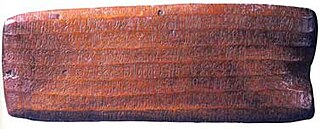
Text G of the rongorongo corpus, the smaller of two tablets located in Santiago and therefore also known as the Small Santiago tablet, is one of two dozen surviving rongorongo texts. It may include a short genealogy.

Text H of the rongorongo corpus, the larger of two tablets located in Santiago and therefore also known as the Great or Large Santiago tablet, is one of two dozen surviving rongorongo texts, and one of three recording the so-called "Grand Tradition".

Text I of the rongorongo corpus, also known as the Santiago Staff, is the longest of the two dozen surviving rongorongo texts. Statistical analysis suggests that its contents are distinct from those of the other texts.
Text N of the rongorongo corpus, the smaller of two tablets in Vienna and therefore also known as the Small Vienna tablet, is one of two dozen surviving rongorongo texts. It repeats much of the verso of tablet E.
Text P of the rongorongo corpus, the larger of two tablets in St. Petersburg and therefore also known as the Great or Large St Petersburg tablet, is one of two dozen surviving rongorongo texts, and one of three recording the so-called "Grand Tradition".

Rongorongo is a system of glyphs discovered in the 19th century on Easter Island that appears to be writing or proto-writing. Text F of the rongorongo corpus, also known as the (Stephen) Chauvet tablet, is one of two dozen surviving texts.
Text K of the rongorongo corpus, also known as the (Small) London tablet, is one of two dozen surviving rongorongo texts. It nearly duplicates the recto of tablet G.
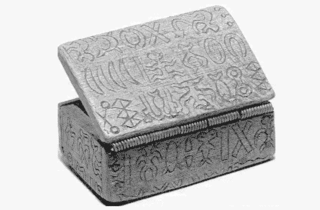
Text Y of the rongorongo corpus, known as the Paris Snuff Box, is one of two dozen surviving rongorongo texts.
Text T of the rongorongo corpus, also known as Honolulu tablet 1 or Honolulu 3629, is the only fluted tablet in the Honolulu collection and one of two dozen surviving rongorongo texts.
The fragmentary text W of the rongorongo corpus, also known as Honolulu tablet 4 or Honolulu 445, is one of two dozen surviving rongorongo texts.
Text V of the rongorongo corpus, the Honolulu oar, also known as Honolulu tablet 3 or Honolulu 3622, may be one of two dozen surviving rongorongo texts. Its authenticity has been questioned.

Text Z of the rongorongo corpus, also known as Poike, is a palimpsest inscription that may be one of two dozen surviving rongorongo texts. The authenticity of the upper text is in question.
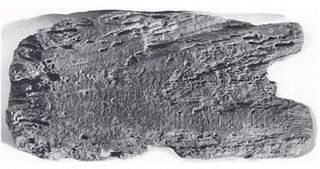
Text M of the rongorongo corpus, the larger of two tablets in Vienna and therefore also known as the Large or Great Vienna tablet, is one of two dozen surviving rongorongo texts.
Text O of the rongorongo corpus, the Berlin tablet, is one of two dozen surviving rongorongo texts.

There have been numerous attempts to decipher the rongorongo script of Easter Island since its discovery in the late nineteenth century. As with most undeciphered scripts, many of the proposals have been fanciful. Apart from a portion of one tablet which has been shown to deal with a lunar calendar, none of the texts are understood, and even the calendar cannot actually be read. The evidence is weak that rongorongo directly represents the Rapa Nui language – that is, that it is a true writing system – and oral accounts report that experts in one category of tablet were unable to read other tablets, suggesting either that rongorongo is not a unified system, or that it is proto-writing that requires the reader to already know the text. Assuming that rongorongo is writing, there are three serious obstacles to decipherment: the small number of remaining texts, comprising only 15,000 legible glyphs; the lack of context in which to interpret the texts, such as illustrations or parallel texts which can be read; and the fact that the modern Rapa Nui language is heavily mixed with Tahitian and is unlikely to closely reflect the language of the tablets—especially if they record a specialized register such as incantations—while the few remaining examples of the old language are heavily restricted in genre and may not correspond well to the tablets either.